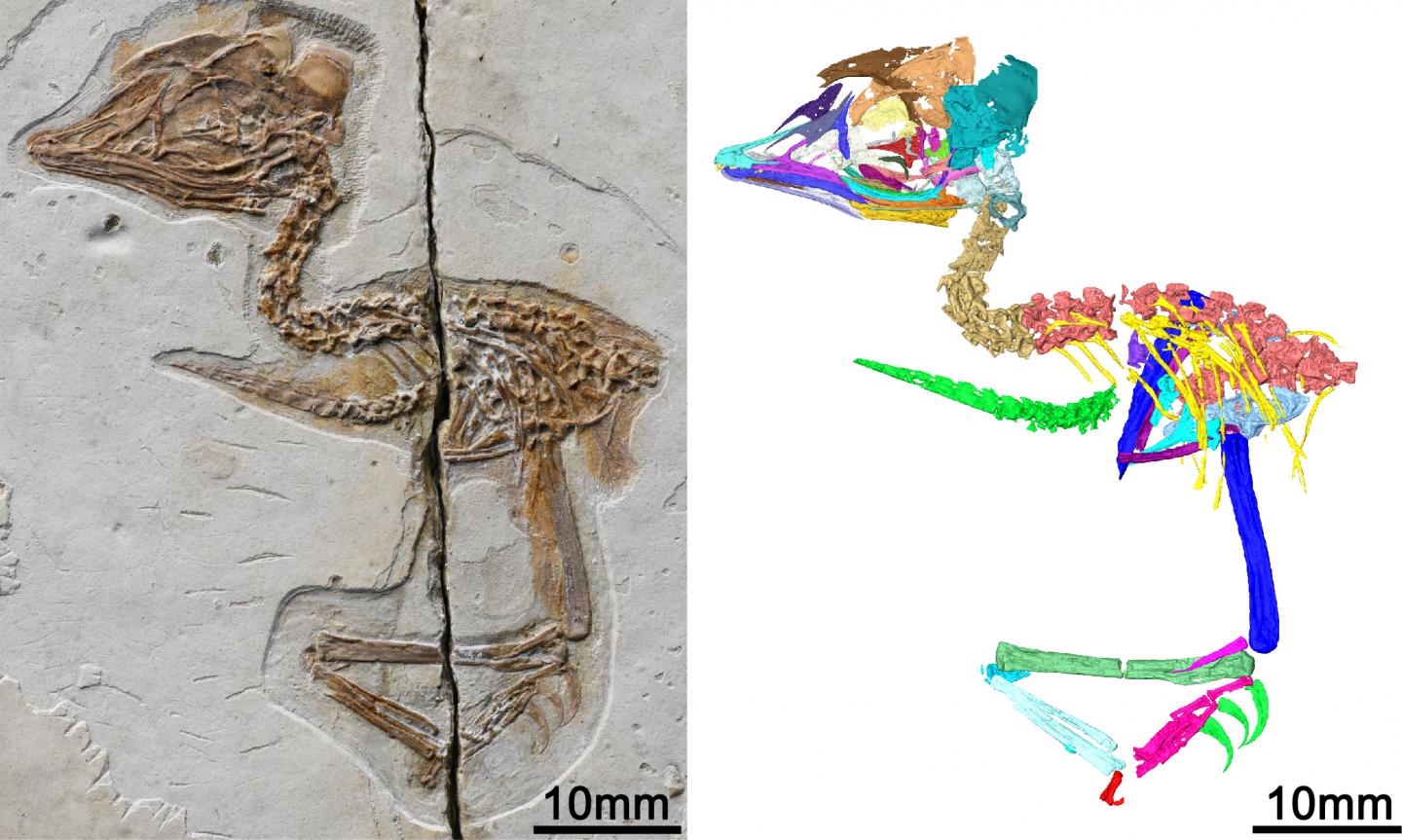A tiny, 120 million-year-old fossil, discovered in northeast China, is neither bird nor dinosaur but is perched on its own evolutionary branch, somewhere in between.
While the 2-centimeter-long (0.75-inch) skull of this little fella holds similarities to much larger dinosaurs like Tyrannosaurus rex, its thin and delicate body looks more like modern-day crown birds, such as sparrows or hummingbirds.
Careful CT scans and a detailed reconstruction of the fossil suggest this bizarre avian species once belonged to an extinct group of early birds called enantiornithines, or "opposite birds".
Some other enantiornithines that have been discovered are no larger than a cockroach. This new one is slightly bigger and would have fit in the palm of your hand. Despite their diminutive size, these clawed and winged creatures were among the most abundant and diverse group of early birds living at the time.
While enantiornithines did not survive the Mesozoic mass extinction event, many of their traits still live on today and they are considered an important evolutionary step on the way to modern birds.
"Having a 'dinosaur' skull on a bird body certainly did not stop the enantiornithines, or other early birds, from being highly successful in places all around the world for tens of millions of years during the Cretaceous," says paleontologist Min Wang from the Chinese Academy of Sciences.
The noggin on this early bird is particularly unique and excellently preserved. Unlike modern birds, whose upper jaws move independently from their brain case, which is known as cranial 'kinesis', the bones on this newly discovered skull are "locked up" and immovable.
They even show attachment points for jaw muscles, which are usually found in dinosaurs and reptiles, like lizards and alligators.
 Digital reconstruction of the Mesozoic bird fossil skeleton. (Min Wang)
Digital reconstruction of the Mesozoic bird fossil skeleton. (Min Wang)
One bone in particular, known as the pterygoid, looked "exactly like that of the dromaeosaur Linheraptor", according to Wang.
Linheraptor dinosaurs are bird-like theropods, an extinct group of dinosaurs that also includes meat-eaters like the T. rex and Velociraptor.
In fact, the back of this early bird's skull resembles raptors more than it does living birds.
This suggests early birds could have evolved from a branch of dinosaurs that includes feathered Velociraptor and winged Microraptor.
"In combination with the 'locked up' temporal bones, the difference in the palate structure also points to the absence of kinesis among early birds," says paleontologist Thomas Stidham from the Chinese Academy of Sciences.
This movement of the skull therefore must have evolved later, leading to the great diversity of skull shapes that we now see among modern crown birds.
"Despite their global conquest and success through the Cretaceous, only the crown group of birds with its derived assemblage of features, allowing for and driving cranial kinesis, survived the end Mesozoic mass extinction, and has thrived ever since," the authors conclude.
The study was published in Nature Communications.
#Nature | https://sciencespies.com/nature/this-tiny-120-million-year-old-fossil-has-a-t-rex-like-skull-on-a-bird-body/
No comments:
Post a Comment